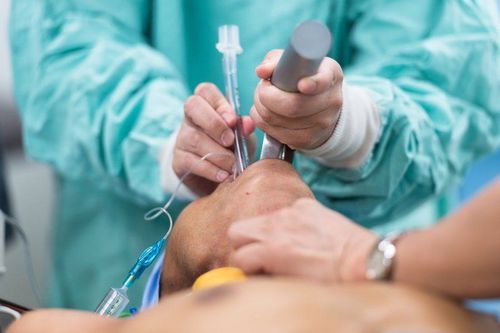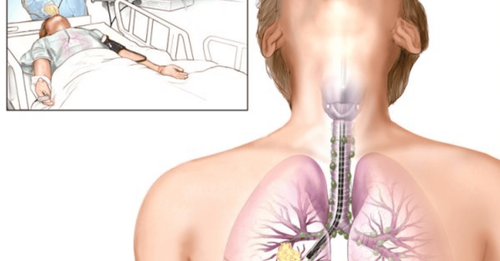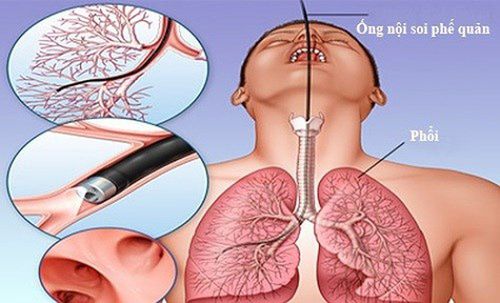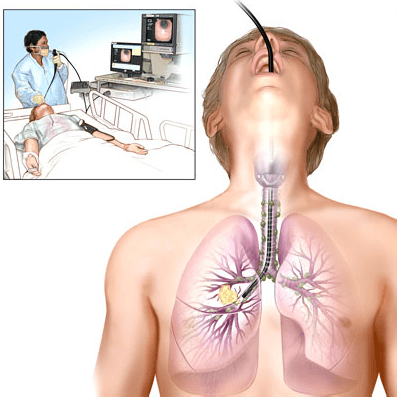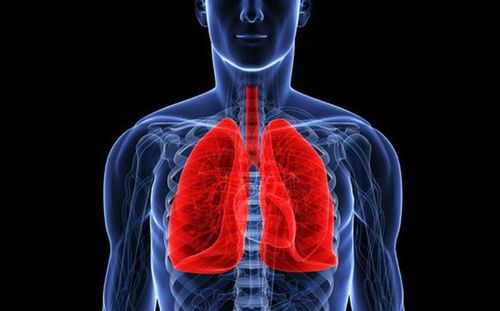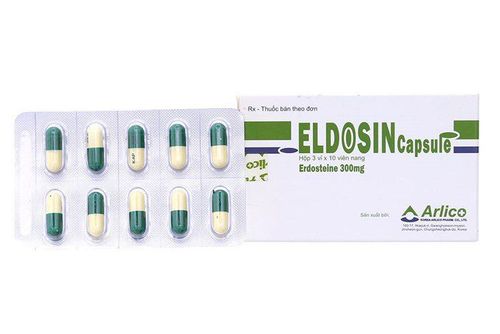This is an automatically translated article.
The article is professionally consulted by Master, Doctor Nguyen Tung Hoanh - Department of Resuscitation - Emergency - Vinmec Nha Trang International General Hospital.Bronchoscopy is a technique commonly used to diagnose problems with the airways, lymph nodes in the chest, airways or to treat respiratory problems, lung diseases in the lungs. patient.
1. How is bronchoscopy performed?
Bronchoscopy is a procedure that allows a doctor to examine the airways with a small bronchoscope. Bronchoscopy helps check for problems with the throat, windpipe, larynx, and lower airways. The bronchoscopy procedure can also be used to diagnose abnormalities with the airways, airway disease, lung disease, or lymph nodes in the chest.For bronchoscopy, the doctor will use a flexible tube with a camera on the end. The bronchoscope will be inserted into the respiratory tract through the nose or mouth to go deep into the trachea to be inserted into the lungs of the patient. If the endoscope is inserted through the nose, it will help the doctor see the airway more clearly. However, if the endoscope is inserted through the mouth, the doctor may use a larger endoscope.
Bronchoscopy procedure :
Step 1: Preparation
Many people feel worried about how long bronchoscopy will take, will it affect their health much? In fact, the bronchoscopy procedure is not too complicated, so the patient can be discharged the same day. Only in some special cases, the patient may have to stay overnight for treatment as prescribed by the doctor.
Before bronchoscopy, the patient should note the following points:
The doctor shares the details of the bronchoscopy process and asks the patient to sign the consent form. Blood test as prescribed by the doctor The patient needs to fast for at least 4 hours before the bronchoscopy, but can still drink water 2 hours before. Patients should avoid taking aspirin, ibuprofen or other blood-thinning medications before the endoscopy. The doctor may place a needle into the patient's vein to give medication if needed. After the bronchoscopy procedure, the patient may feel drowsy. Therefore, if you perform bronchoscopy, you should go with your family or prepare the necessary facilities when you leave the hospital. In addition, bronchoscopy can be tiring, so you should arrange time to recover.
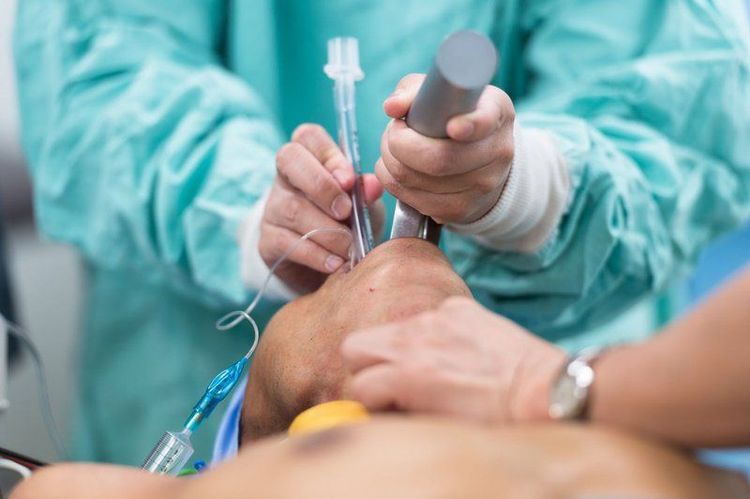
Nội soi khí phế quản giúp kiểm tra các vấn đề đối với cổ họng, khí quản, thanh quản
The patient lies in a suitable position, the head is higher than the body (maybe in a sitting position) and tilts the neck back. The doctor will spray numbing medicine into the patient's mouth and throat to help reduce discomfort and nausea. If the bronchoscope is done through the nose, the doctor will put a numbing jelly that will be placed into one of the patient's nostrils. The doctor will insert a flexible bronchoscope through the patient's nostril or mouth and down into the lungs, the bronchoscope will help examine the patient's airways. In case you want to make a more accurate diagnosis, the doctor can perform a biopsy when finding suspicious lesions, in addition, the doctor can also inject a small amount of fluid into the patient's lungs and then aspirate. This volume of fluid is released to see the cells collected from inside the lungs.
3. Complications when bronchoscopy can be encountered
The patient's psychology is still worried that bronchoscopy is not dangerous? In fact, this is a simple procedure that is quite safe and causes few complications. However, in some cases, patients may still experience some complications during bronchoscopy. Therefore, before performing the procedure, doctors can discuss the risks and complications of bronchoscopy as follows: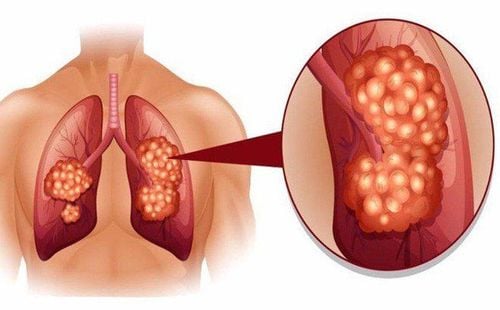
Nội soi khí phế quản giúp phát hiện ung thư phổi
At Vinmec International General Hospital, flexible bronchoscopy is performed on modern machinery. The patient will be anesthetized and carefully controlled the airway to ensure safety and minimize irritation or discomfort for the patient before the procedure, then the doctor will perform the endoscopic technique. , remove the foreign body and then check and control to make sure there are no complications for the patient.
Please dial HOTLINE for more information or register for an appointment HERE. Download MyVinmec app to make appointments faster and to manage your bookings easily.




